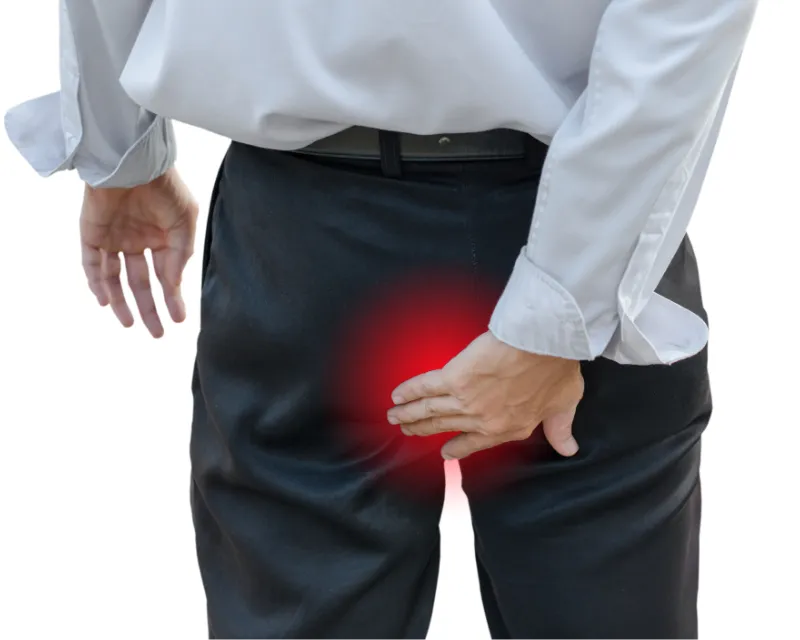Steissbeinfistel akut
Steht die Abschlussprüfung kurz bevor und Sie sind tagelang am Schreibtisch gesessen? Ist die wichtige Präsentation für den Chef noch nicht fertiggestellt? Haben Sie bereits hunderte Kilometer auf der Autobahn zurückgelegt oder kommen Sie gerade von einem Langstreckenflug und Sie können vor Schmerzen kaum noch sitzen?
Diese Umstände deuten auf eine akute Steißbeinfistel hin, auch als Pilonidalabszess oder entzündeter Sinus pilonidalis bezeichnet. Die Schmerzen können über Nacht so extrem werden, dass jede Aktivität zur Höllenqual wird. Umgangssprachlich werden oft auch die Begriffe Furunkel oder Karbunkel verwendet.
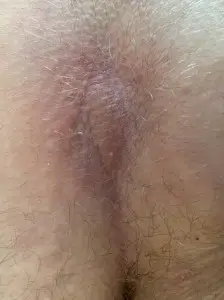
Pilonidal-Abszess: Symptome
- Schwellung: Eine deutliche Schwellung und Rötung sowie Verhärtung des umliegenden Gewebes sind die typischen Symptome.
- Schmerzen: Abszesse sind oft mit starken Schmerzen verbunden, insbesondere bei Berührung oder Druck auf die betroffene Stelle.
- Eiterbildung: Ein Abszess ist mit Eiter gefüllt, der eine gelbliche oder grünliche Farbe haben kann.
- Fieber: Bei größeren Abszessen kann auch Fieber auftreten, da der Körper versucht, die Infektion zu bekämpfen.
Es ist wichtig zu beachten, dass nicht alle Abszesse offensichtliche Symptome aufweisen. Gerade beim Pilonidalabszess fällt manchmal nur eine leichte Asymmetrie der Pofalte auf.
Wann ist ein Arztbesuch notwendig?
Selbstbehandlung: Ja oder Nein?
Bei leichten Beschwerden kann eine Behandlung ohne Operation mit
- Kühlung
- Antiphlogistika (z.B. Ibuprofen)
- Zugsalben
- oder Antibiotika
versucht werden. Zeigt sich jedoch keine Besserung, vergrößert sich der Abszess, oder treten Fieber und starke Schmerzen auf, sollte unbedingt ein Facharzt konsultiert werden. Ein Spezialist kann die beste Behandlungsoption festlegen, die oft das sterile Öffnen und Drainieren des Abszesses unter sicheren Bedingungen umfasst. Dadurch wird man schnell schmerzfrei.
Zu welchem Arzt sollte man gehen?
Im Notfall brauchen Sie keinen Termin: Wenn Sie nicht zu weit entfernt wohnen, schicken Sie uns einfach an info@darmsprechstunde.de eine kurze mail, gerne auch ein Foto der betroffenen Region, und kommen direkt vorbei (Mo.-Fr. 8.00 – 17.00 Uhr).
Ausserhalb unserer Öffnungszeiten oder weiter Distanz findet man Hilfe in der Notaufnahme oder beim Hausarzt.
Um Fehldiagnosen wie Steißbeinprellungen, Knochenhautentzündungen oder Überlastungsschmerzen zu vermeiden, empfiehlt es sich, direkt einen Spezialisten aufzusuchen, der häufig derartige Abszesse behandelt.
Was erwartet Sie beim Arzt?
„Ubi pus, ibi evacua.“ – Dieser lateinische Spruch „Wo Eiter ist, dort entleere ihn“ ist jedem Arzt geläufig und beschreibt ein ebenso einfaches wie wirkungsvolles Therapieprinzip. Die praktische Umsetzung hingegen, gerade beim Steißbeinabszess, bereitet dem Arzt nicht selten Schwierigkeiten und dem Patienten unnötige Schmerzen. Wir beschreiben hier unsere Technik.
Kann ich den Abszess selbst öffnen?
Wir raten dringend davon ab, den Abszess selbst auszudrücken oder aufzustechen. Die Anleitung ist für entsprechend ausgestattete Ärzte in Praxis oder Krankenhausambulanz gedacht.
Auch Versuche, den Steißbeinabszess auszudrücken, sind nicht erfolgsversprechend und verschlimmern manchmal Schmerzen und Entzündung.
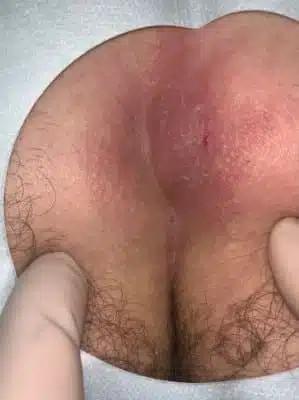
Benötigte Instrumente:
- Erfahrung
- Diagnostisches Ultraschall Gerät Linearschallkopf 7.5 oder 10 MHz
- Feine, chirurgische Pinzette, z.B. Adson
- Feine, spitze Präparierschere, z.B. Supercut Iris Schere 11.5 cm
Verbrauchsmaterialien:
1. Aufklärung und Beruhigung des Patienten
Wir informieren den Patienten ausführlich über die gutartige Natur seiner Erkrankung sowie über die erfolgreiche Behandlungsmethode mittels eines zweistufigen Verfahrens. Dieses beinhaltet zunächst die Abszessdrainage gefolgt von einer minimal-invasiven Operation der Steißbeinfistel im zweiten Schritt. Dabei besprechen wir offen und umfassend etwaige Ängste.
Sie brauchen sich normalerweise keine Sorgen um Blutvergiftung, Knochenbeteiligung oder eine Verbindung zum Darm zu machen.

2. Identifikation der optimalen Punktionsstelle
Beim Auffinden des Scheitelpunkts der Abszesshöhle erfolgt zunächst eine Palpation und die Messung der Hautdicke über dem Abszess. Es ist wichtig, dass die Hautdicke für die Verwendung der Biopsiestanze maximal 5 mm beträgt. Oft lässt sich die optimale Punktionsstelle anhand einer „weichen Delle“ lokalisieren. Bei einem tiefliegenden Abszess wird empfohlen, die Spaltung unter Vollnarkose durchzuführen.
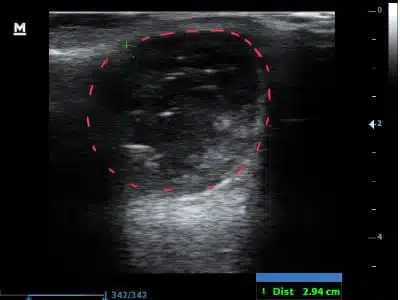
3. Injektion der Lokalanästhesie
Nach der intradermalen Infiltration eines 1,5 cm großen Hautareals an der Punktionsstelle geben wir der Lokalanästhesie kurz Zeit, ihre Wirkung zu entfalten, bevor wir den Eingriff fortsetzen. Auf den Einsatz von Kältespray zur Schmerzlinderung verzichten wir, da dessen Effektivität begrenzt ist und die enthaltenen FCKW zudem umweltschädlich sind. Es empfiehlt sich im Sinne optimalen Patientenkomforts, die Lokalanästhesie von der Seite durchzuführen, die weniger entzündet ist.
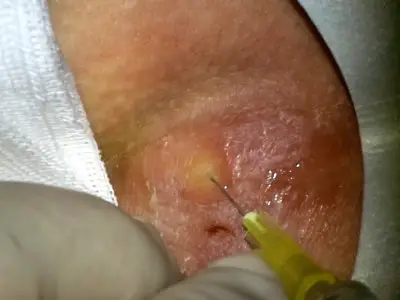
4. Eröffnen der Abszesshöhle
Wir setzen mit einer Biopsiestanze eine 5 mm Öffnung, und entfernen den Hautzylinder mittels einer feinen Pinzette. Falls nötig, wird die Abszesskapsel vorsichtig mit einer feinen Präzisionsschere eröffnet, worauf sich üblicherweise reichlich Eiter entleert. Diese runde Öffnung ist groß genug, um ein erneutes Verkleben zu verhindern, bleibt jedoch klein genug, um den Heilungsprozess für den Patienten so angenehm wie möglich zu gestalten.
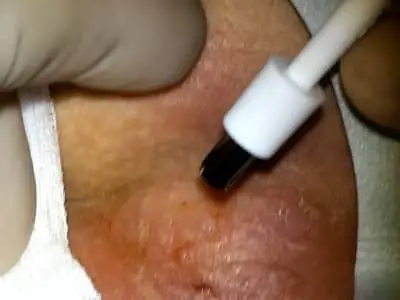
5. Stop!
Die Akutbehandlung ist nun abgeschlossen. Das restliche Sekret wird sich von selbst entleeren. Wir legen einen dicken Saugverband an. Falls eine ausgeprägte, phlegmonöse Reaktion in der Umgebung des Abszesses vorliegt, kann ein Antibiotikum verordnet werden. Es wird keine Tamponade verwendet, und es erfolgt kein Einsatz von scharfen Löffeln.
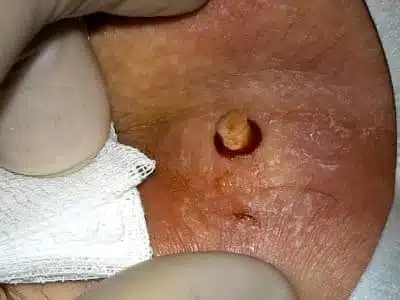
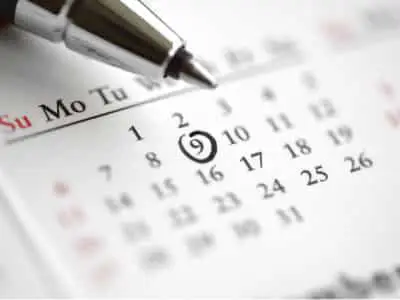
Nicht vergessen: Nachsorge und Heilung
Die Nachsorge ist einfach: Abduschen, Kompresse oder Slipeinlage, fertig!
Aber: Ohne Durchführung des zweiten Behandlungsschritts (Entfernung der Steissbeinfistel) das Risiko eines erneuten Auftretens weiterer Abszesse sehr hoch ist. Wir bieten einen Kontrolltermin am Folgetag an, falls die Entzündung nicht ausreichend zurückgegangen ist. Wenn man zu lange wartet, besteht die Gefahr, dass der Abszess zurückkehrt. Andererseits ist der Eingriff technisch anspruchsvoll, wenn er zu früh durchgeführt wird. Wir bevorzugen daher ein Zeitintervall von mindestens einer Woche und höchstens drei Wochen.
Noch Fragen? Unsere FAQ zum Pilonidal-Abszess
Ist ein Abszess ein Notfall?
Ja. Es ist nicht notwendig, Schmerzen aufgrund eines Pilonidalabszesses zu ertragen. Obwohl schwerwiegende Komplikationen wie eine Ausbreitung der Entzündung auf den gesamten Organismus ("Blutvergiftung", Sepsis) selten sind, empfehlen wir, den Abszess noch am Tag der Diagnosestellung chirurgisch zu behandeln.
Wie lange dauert es, bis ein Abszess reif ist?
Vom Auftreten der ersten Symptome bis zur Entwicklung einer prall gefüllten Eiteransammlung am Steißbein kann es oft nur Stunden bis zu einigen Tagen dauern.
Kann man eine Steissbeinfistel ausdrücken?
Es wird dringend davon abgeraten, eine Steißbeinfistel auszudrücken. Dieser Vorgang ist nicht nur schmerzhaft, sondern auch weitgehend erfolglos, es sei denn, eine spontane Eröffnung des Abszesses steht unmittelbar bevor. Unsere sonographischen Untersuchungen zeigen, dass die Haut über dem Abszess zwischen 3 und 5 mm dick ist, was zu dick ist, um einfach durch Druck eine Öffnung herbeizuführen. Das Ausdrücken kann zudem zu einer Verschlimmerung der Entzündung führen. Es ist angenehmer, sicherer und effektiver, eine zielgerichtete Behandlung von einem Facharzt durchführen zu lassen.
Wann platzt eine Steissbeinfistel?
Ein Steißbeinabszess kann erst dann platzen, wenn sich über Tage hinweg erheblicher Druck aufgebaut hat und die Entzündungsprozesse die Haut allmählich schwächen. Wir empfehlen dringend, nicht so lange zu warten, da dies unnötiges Leiden bedeutet. Mit der richtigen Erfahrung kann schnell und schonend geholfen werden.
Braucht man eine Vollnarkose bei Abszess?
Ein verbreiteter Irrtum ist, dass Lokalanästhesie in entzündetem Gewebe aufgrund der pH-Verschiebung nicht wirksam ist. Tatsächlich lässt sich der kleine Bereich, der bei einer Punktion mit einer Stanze geöffnet wird, mit entsprechender Erfahrung trotzdem effektiv betäuben.
Welches Antibiotikum bei Steissbein Abszess?
Geeignete Antibiotika zur Behandlung umfassen Breitband-Antibiotika wie Cephalosporine (zum Beispiel Cefuroxim) oder Penicilline (zum Beispiel Amoxicillin mit Clavulansäure). Bei einer Penicillinallergie können auch Makrolide wie Clindamycin eine alternative Option darstellen, allerdings mit gewissen Einschränkungen bezüglich der Wirksamkeit.
Wann darf ich duschen nach Abszess OP?
Wir empfehlen, die betroffene Region behutsam auszuduschen, sobald Sie wieder zu Hause sind. Ein sanftes Auswaschen mit lauwarmem Wasser hilft, die Haut von Eiter und Wundsekret zu reinigen. Es ist sinnvoll, dabei milde, pH-neutrale Seifen zu verwenden.
Wie lange bin ich krankgeschrieben nach Abszess OP?
Nach einer Operation eines Steißbein-Abszesses erholen sich viele Patienten schnell und können oft bereits am nächsten Tag wieder ihrer Arbeit nachgehen.
Soll man einen Abszess kühlen oder wärmen?
Die Frage, ob ein Abszess gekühlt oder gewärmt werden sollte, wird unterschiedlich beantwortet, je nach medizinischer Tradition. In der europäischen Schulmedizin wird empfohlen, Entzündungen zu kühlen, um Schwellungen zu reduzieren und Schmerzen zu lindern. Kühlung kann besonders in der Anfangsphase einer Entzündung hilfreich sein, um die Ausbreitung der Entzündung zu begrenzen und akute Beschwerden zu mildern.
Im Gegensatz dazu befürwortet die ayurvedische Medizin oft die Anwendung von Wärme bei Abszessen, um die Reifung und damit die natürliche Entleerung des Eiters zu fördern. Wärme kann die Durchblutung in der betroffenen Region erhöhen, was den Heilungsprozess unterstützen und die Reifung des Abszesses beschleunigen kann.
In der Praxis wird häufig eine Kombination beider Ansätze empfohlen, abhängig vom Stadium des Abszesses und den individuellen Symptomen.
Dr. Bernhard Hofer und Florian Liebl
Fachärzte für Viszeralchirurgie und Proktologie – PartG mbB
Brienner Str. 13, D-80333 München
- info@darmsprechstunde.de
- Montag - Freitag: 08.00 - 13.00 und 14.00 - 18.00
- und nach Vereinbarung
- Samstag, Sonntag, Feiertag : geschlossen
- Beachten Sie auch unsere Hinweise im Titel dieser Website und auf unserer Telefonansage.

Mit dem Laden der Karte akzeptieren Sie die Datenschutzerklärung von Google.
Mehr erfahren
© 2024 Proktologische Praxis München

